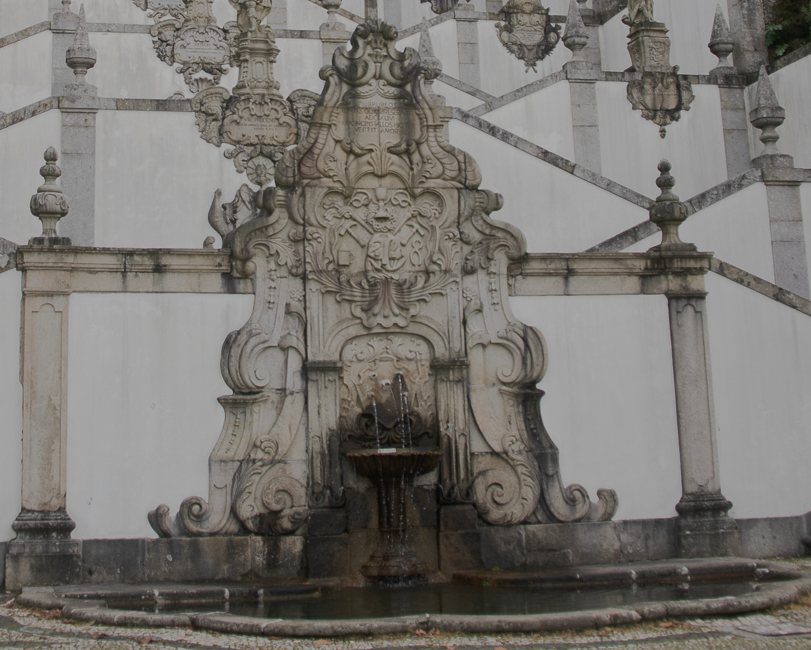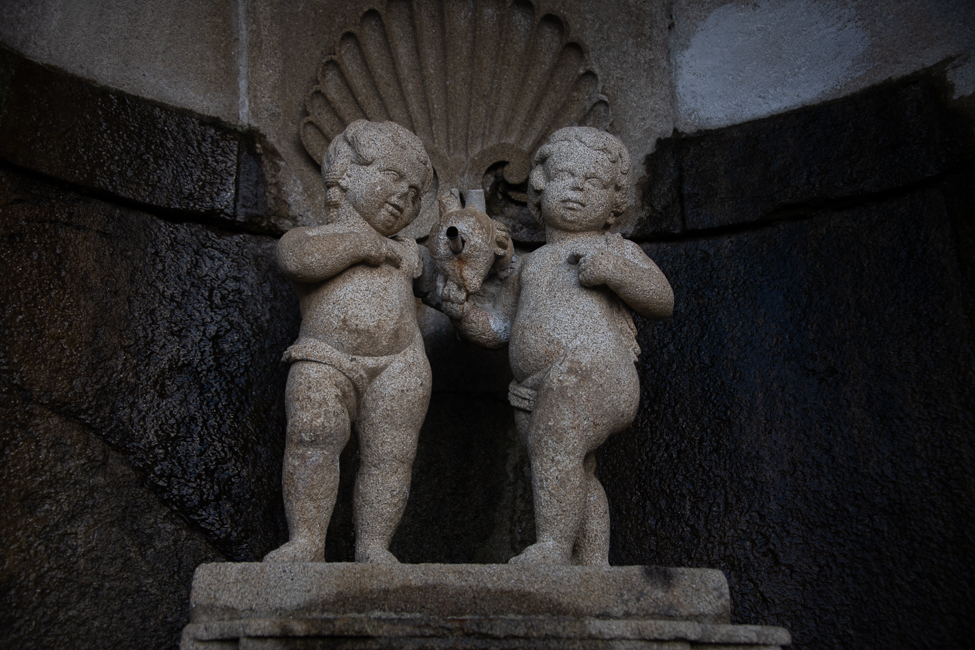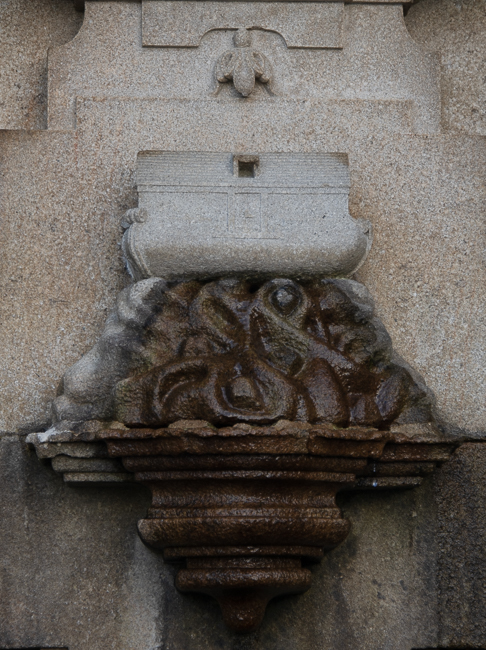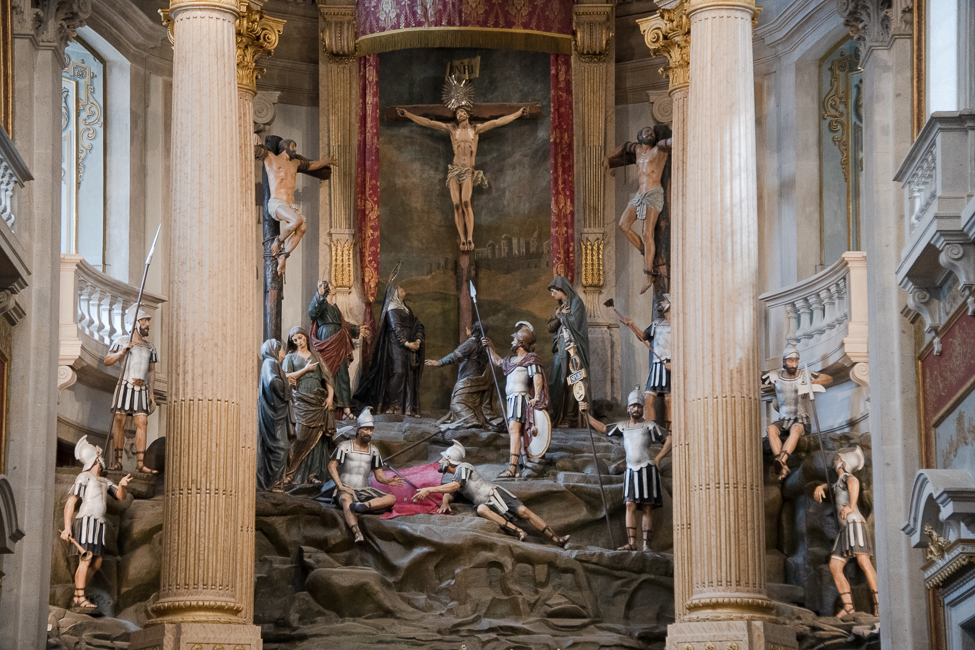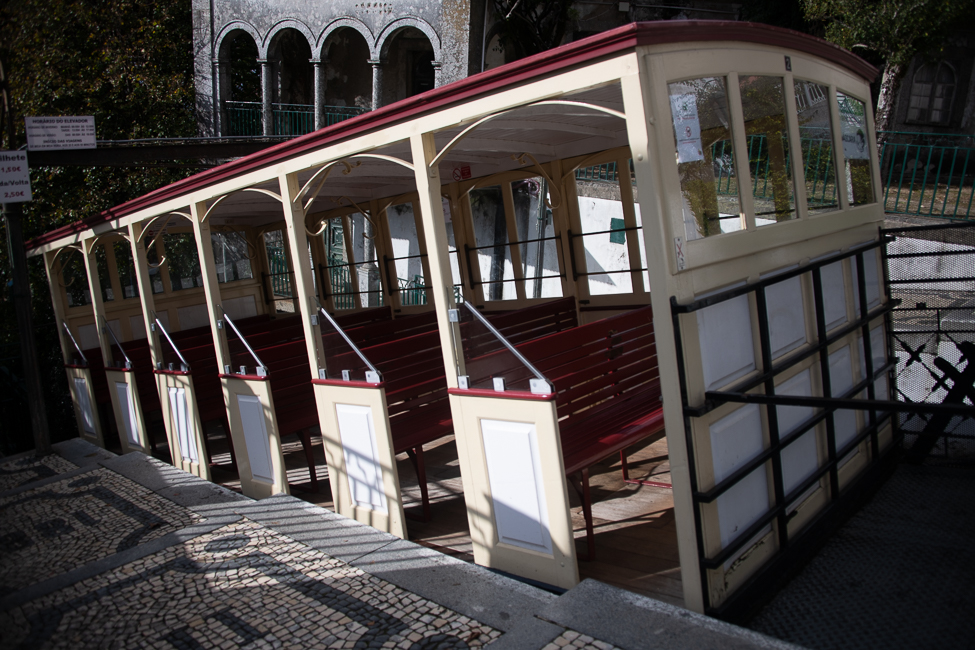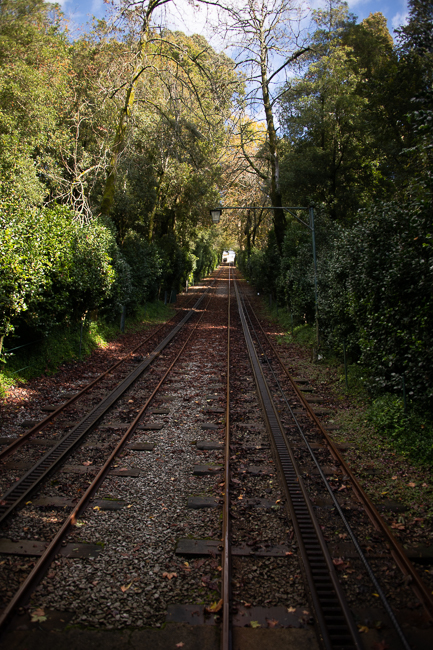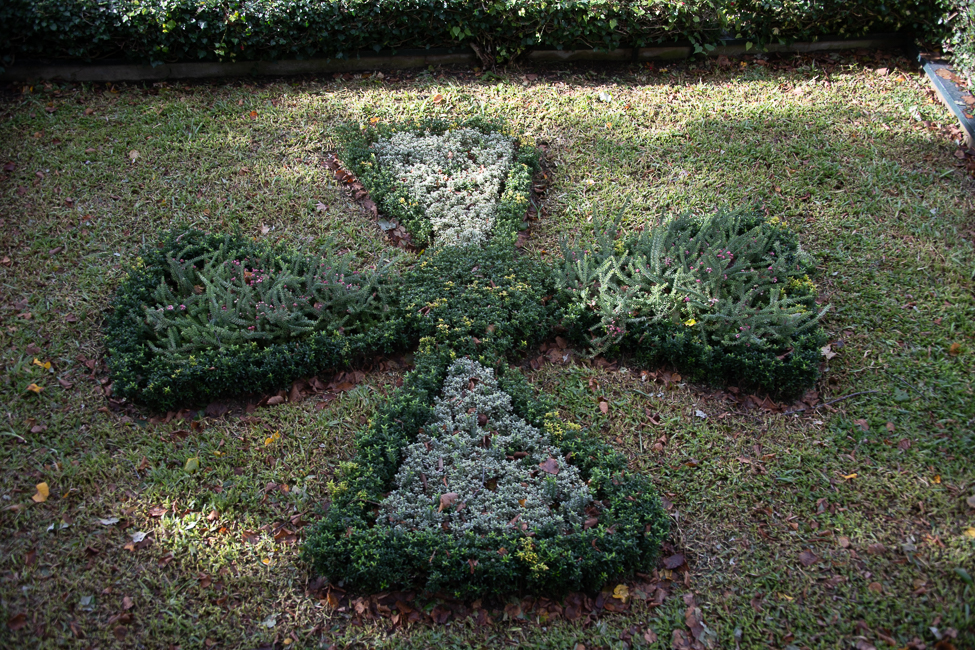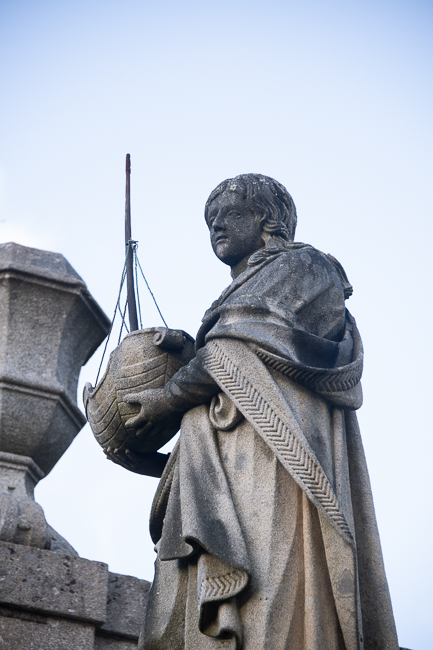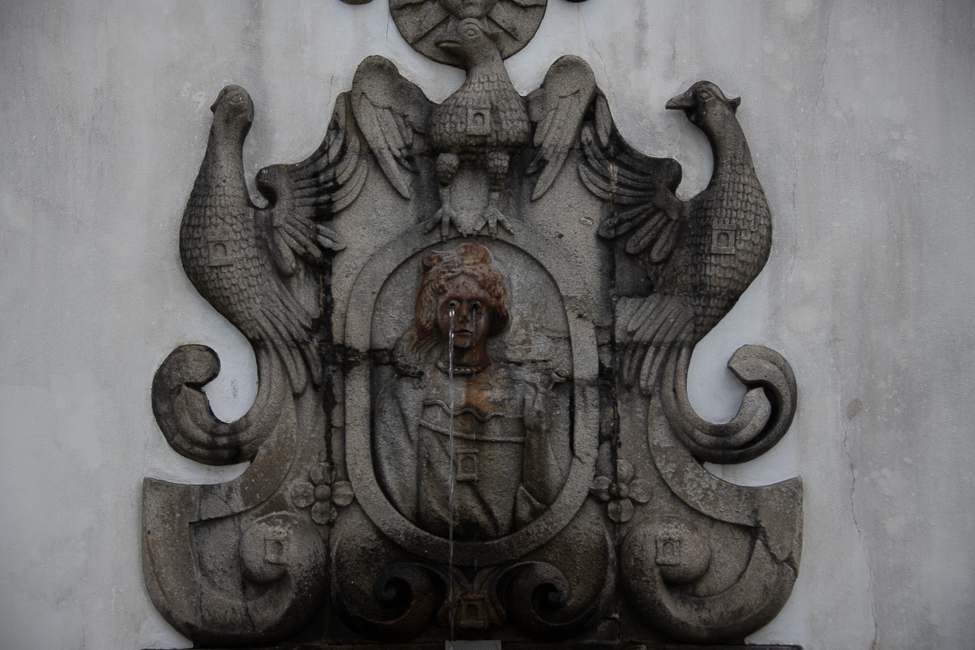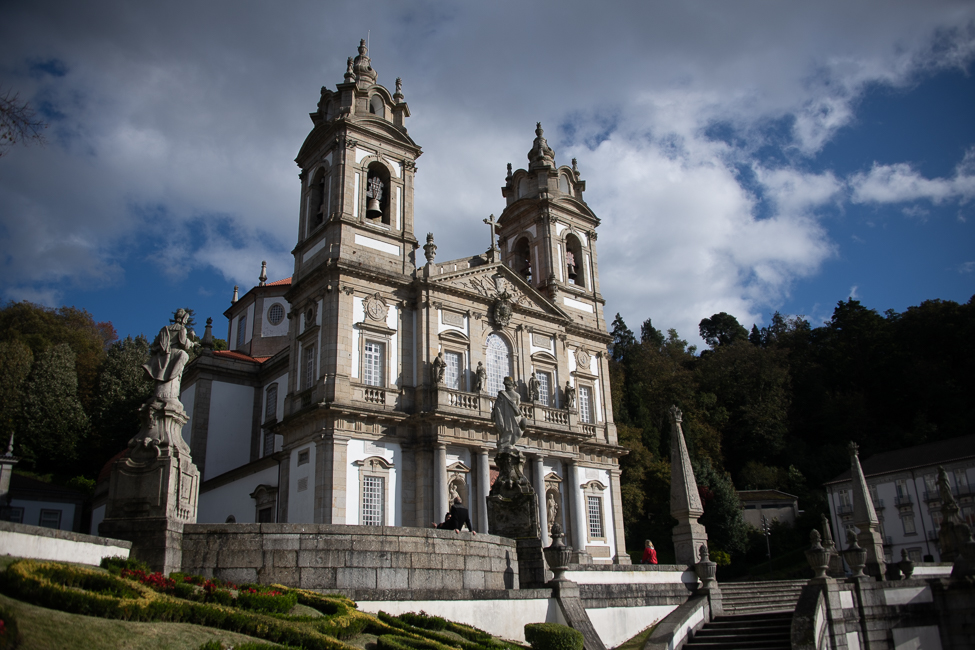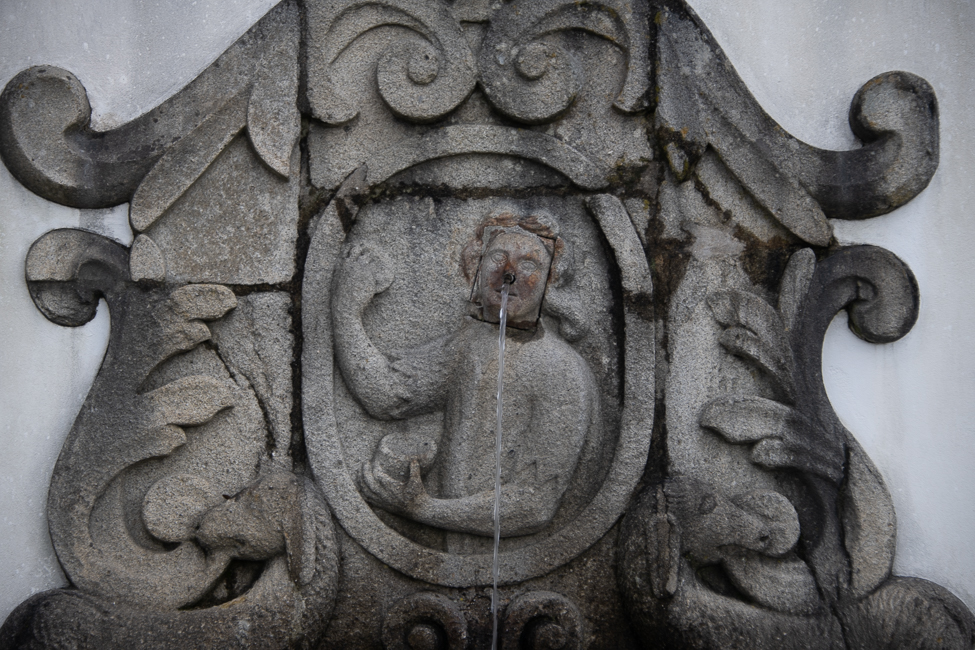November 2021
This stairway is why you come to Bom Jesus in Braga, Portugal.
The first indication of a chapel on this hill dates from 1373. The chapel at the top of the hill today, dedicated to the Holy Cross, was built in the 15th and 16th centuries. It took over 600 years to complete the Baroque style building.
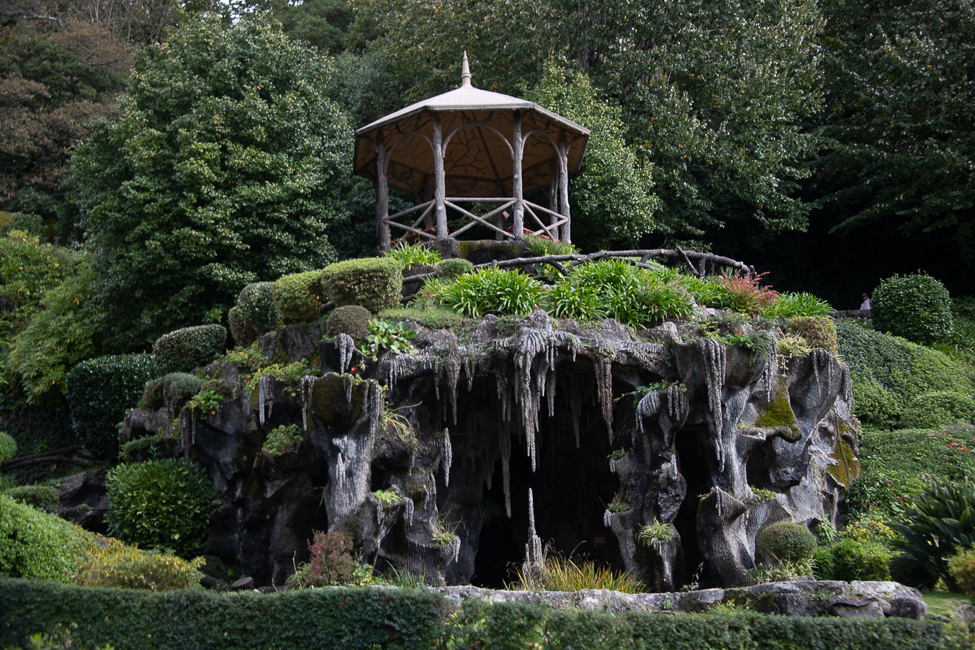
A Faux Bois folly sits at the top of the property. Its significance or history I was unable to find.
The site of the chapel is on Mount Espinho. The entire thing is part of the European concept of the Sacri Monti or Sacred Mountain, propagated by the Catholic Church at the Council of Trent in the 16th century, as a reaction to the Protestant Reformation.
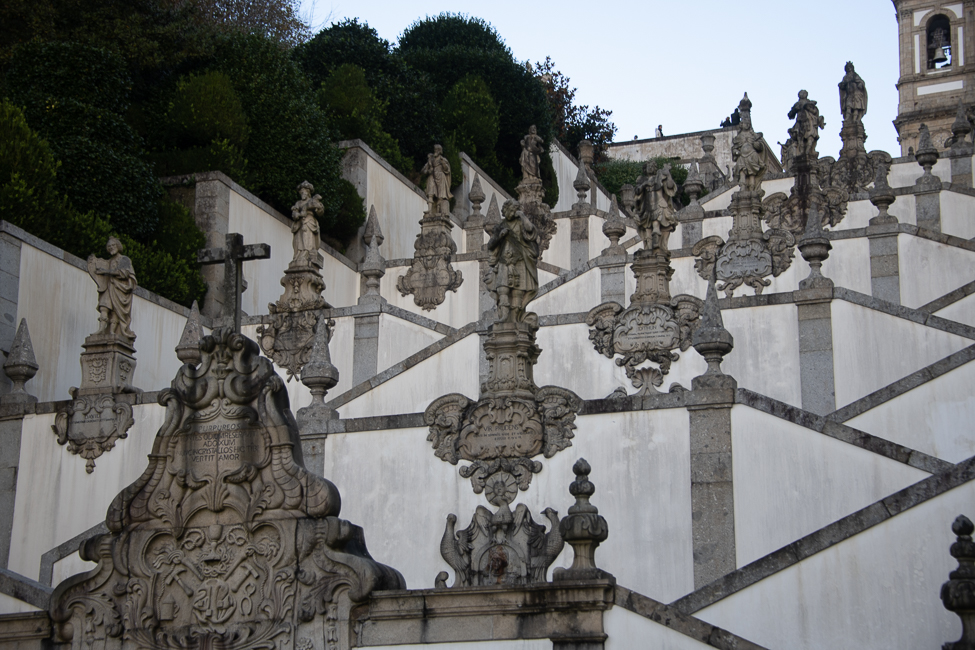 The zigzag form of the stairways has influenced other sites around the world including the Sanctuary of Congonhas in Brazil. Pilgrims were encouraged to climb the stairs on their knees to experience the Passion of Christ.
The zigzag form of the stairways has influenced other sites around the world including the Sanctuary of Congonhas in Brazil. Pilgrims were encouraged to climb the stairs on their knees to experience the Passion of Christ.
There are fountains at every landing of the stairwells. They symbolize the water of life and purification of the body and spirit. The Fountain of the Five Wounds of Christ is at the bottom of the staircase and spits from five spouts on the Portugese coat of arms.
This tramway was built in 1880 and designed by Raoul Mesnier du Ponsard, under the direction of Swiss engineer Nikolaus Riggenbach, and financed by businessman Manuel Joaquim Gomes. Gomes was interested in replacing the system of vehicles pulled by horses that were then switched to oxen to get up the steeper parts of the hill. This was the first funicular on the Iberian Peninsula.
I rode the tram down and then up again, just for the fun of it, total cost less than 3 Euros.
The site of Bom Jesus de Braga was declared a UNESCO World Heritage Site in 2019.
A few random Photos:
*

